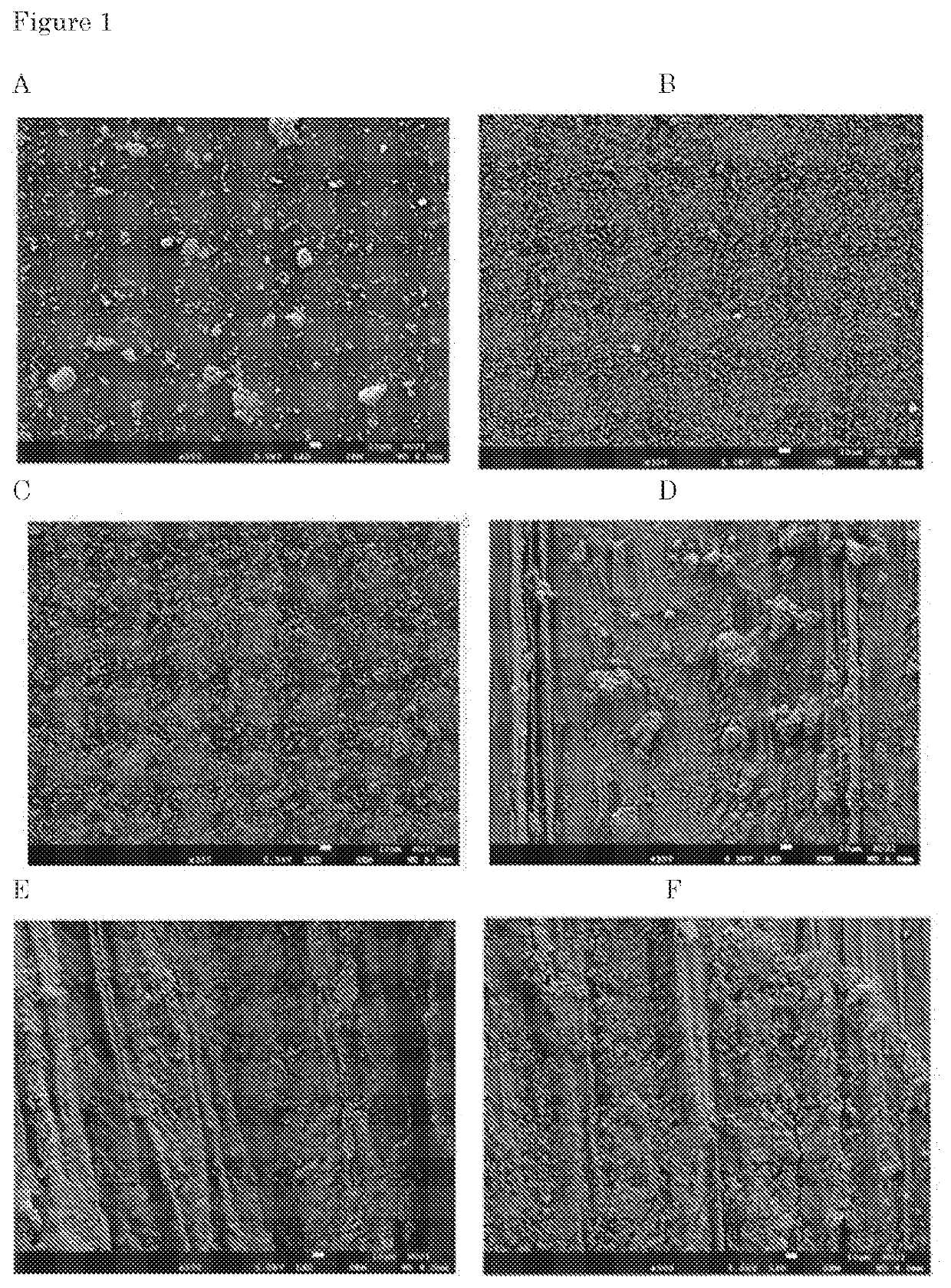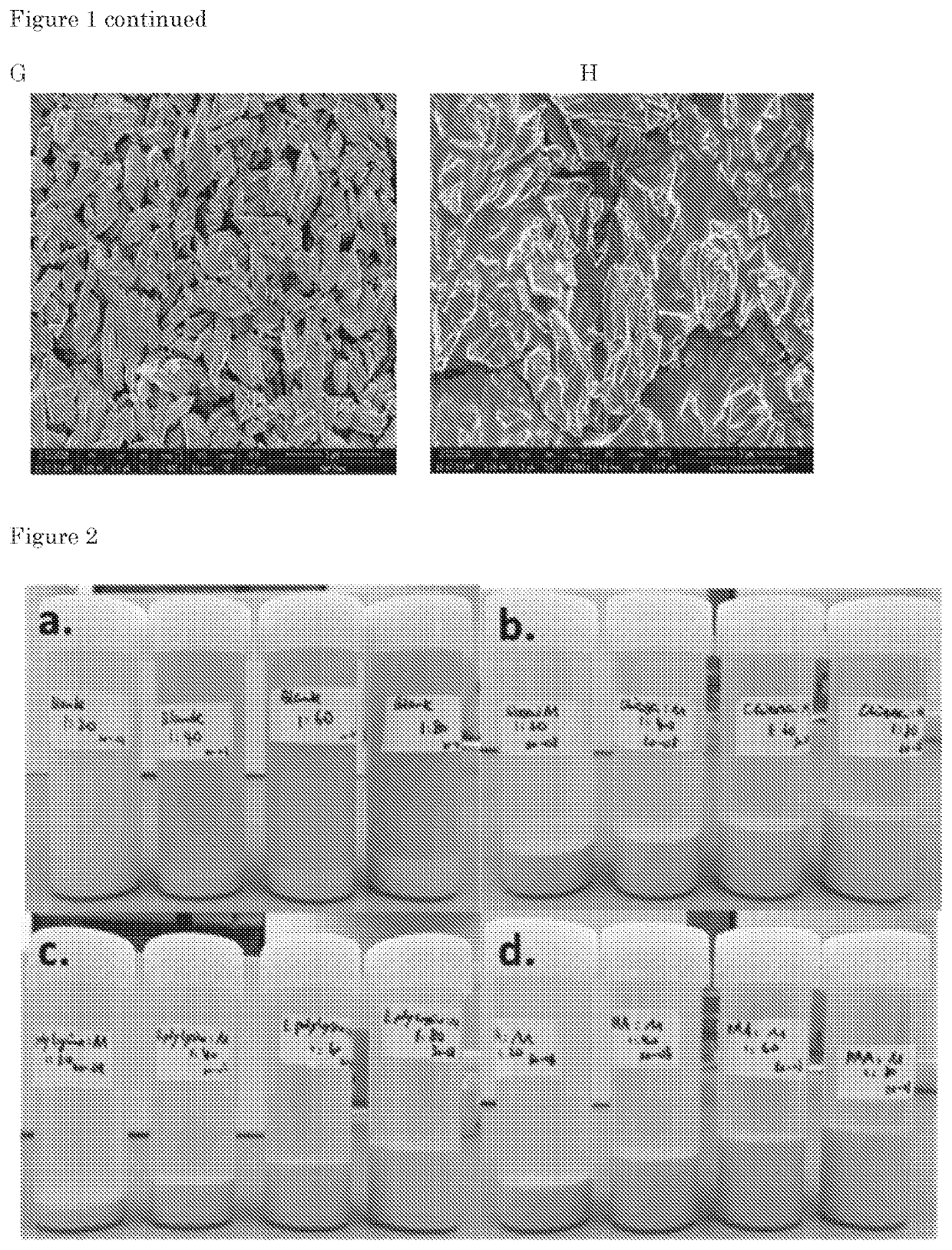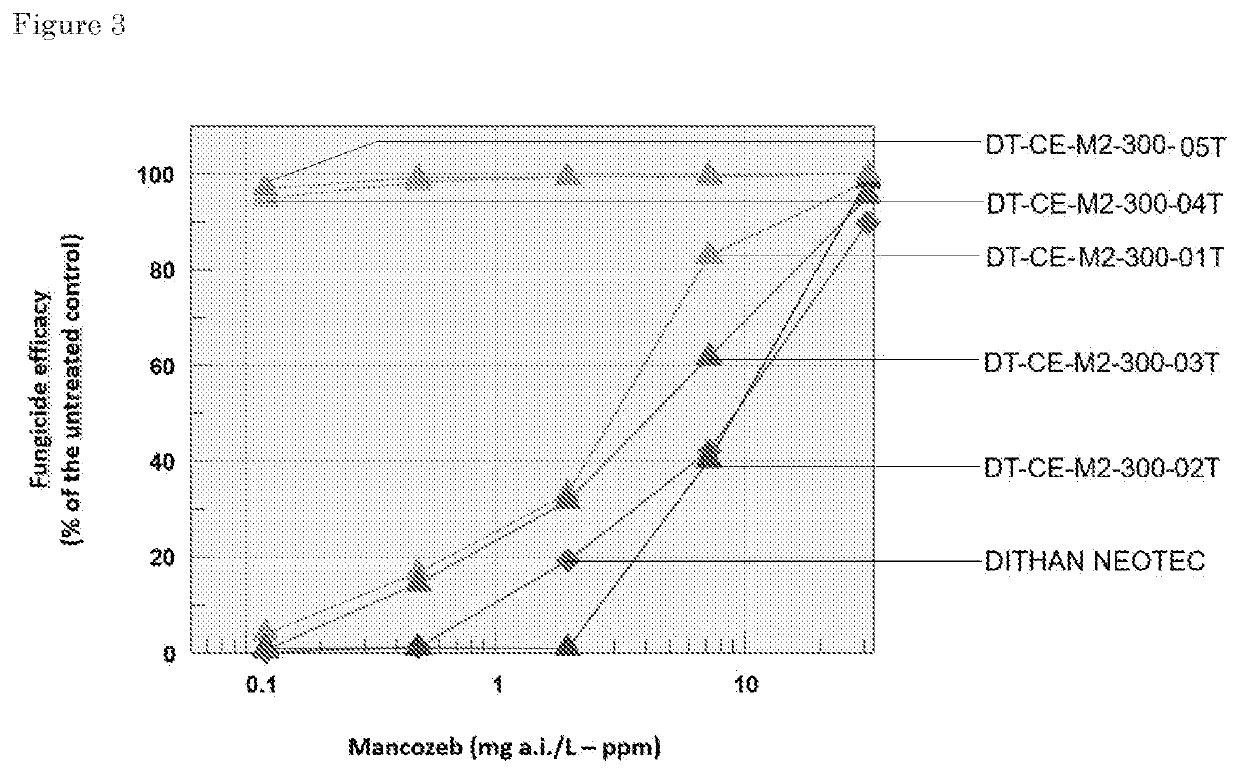Dithiocarbamate fungicide macromolecular complexes
a technology of dithiocarbamate and macromolecular complexes, which is applied in the field of dithiocarbamate fungicide macromolecular complexes, can solve the problems of human exposure to pesticides and adverse health effects
- Summary
- Abstract
- Description
- Claims
- Application Information
AI Technical Summary
Benefits of technology
Problems solved by technology
Method used
Image
Examples
example 1
the Polycation Chitosan (CTS) or Poly Allyl Amine (PAA) on the Structure of Mancozeb Particles
Materials and Methods
[0538]Mancozeb powder was added to a chitosan solution or polyallylamine solution at a pH of 4 using acid (e.g. hydrochloric acid). The ratio of chitosan:mancozeb was 1:64 (based on weigh / weight % of dry material). The ratio of polyallylamine:mancozeb was 1:64 (based on weigh / weight % of dry material). The control was mancozeb powder in water. The chitosan:mancozeb dispersion was mixed using a mechanical stirring device for 10 minutes. The resultant samples of chitosan-mancozeb, polyallylamine-mancozeb and of the control mancozeb were analyzed by Scanning Electron Microscopy (SEM) and pictures were taken (see FIG. 1).
Results
[0539]The SEM pictures show that the particle structure after mixing with chitosan was very different from the control particle structure without chitosan. The SEM pictures revealed that in the Mancozeb control, particles of various size and shapes a...
example 2
on of Chitosan (CTS), Epsilon-Poly-L-Lysine (ϵ-PLL) and Poly Allyl Amine (PAA) with Mancozeb (MZ)
Materials and Methods
[0541]To a 1 g / l polycation solution (either chitosan (CTS), ϵ-poly-L-lysine (r-PLL) or polyallylamine (PAA)), MZ powder was added to 20, 40, 60, 80 g / l of MZ, providing ratios 1:20, 1:40, 1:60 and 1:80 based on weigh / weight % of dry material (polycation:MZ). Mancozeb added to an aqueous solution served as a control. The dispersions were mixed for 10 min with a vortexing device. After standing 2 h on the lab bench the interaction layer of mancozeb complexed to the polycations and of mancozeb without polycation (control) were analyzed. In FIG. 2, pictures of the resulting sedimentation layers are presented.
Results
[0542]All polycations tested are water soluble. The dispersion of mancozeb in water without polycations forms a relatively small sediment layer on the bottom of the bottle. If the water soluble polycations were added to the dispersions of mancozeb and mixed a...
example 3
Polycations on the Zeta Potential of Mancozeb Dispersions
[0544]Zeta potential is an indicator for complexation and stability of a dispersion. A zeta potential close to zero between −10 mV and +10 Mv indicates a maximum interaction between polyelectrolytes and MZ. The Zeta potential is the charge that develops at the interface between a solid surface and its liquid medium. Zeta potential values give a value of the net charge (in mV) on particle surfaces.
Materials and Methods
[0545]To a 1 g / l aqueous polycation solution (chitosan (CTS), ϵ-poly-L-lysine or polyallylamine (PAA)), 5, 40, 60, 80 and 120 g / l of MZ powder was added, resulting in ratios 1:5, 1:40, 1:60, 1:80 and 1:120 (based on weigh / weight % of dry material), respectively. Mancozeb added to an aqueous solution served as a control. The dispersions were mixed for 10 min on a vortexing device.
[0546]The different polycation-mancozeb incubations were analyzed for the Zeta potential with a Zetasizer Nano (Malvern Instruments. Unit...
PUM
 Login to View More
Login to View More Abstract
Description
Claims
Application Information
 Login to View More
Login to View More - R&D
- Intellectual Property
- Life Sciences
- Materials
- Tech Scout
- Unparalleled Data Quality
- Higher Quality Content
- 60% Fewer Hallucinations
Browse by: Latest US Patents, China's latest patents, Technical Efficacy Thesaurus, Application Domain, Technology Topic, Popular Technical Reports.
© 2025 PatSnap. All rights reserved.Legal|Privacy policy|Modern Slavery Act Transparency Statement|Sitemap|About US| Contact US: help@patsnap.com



